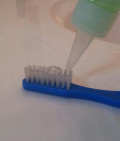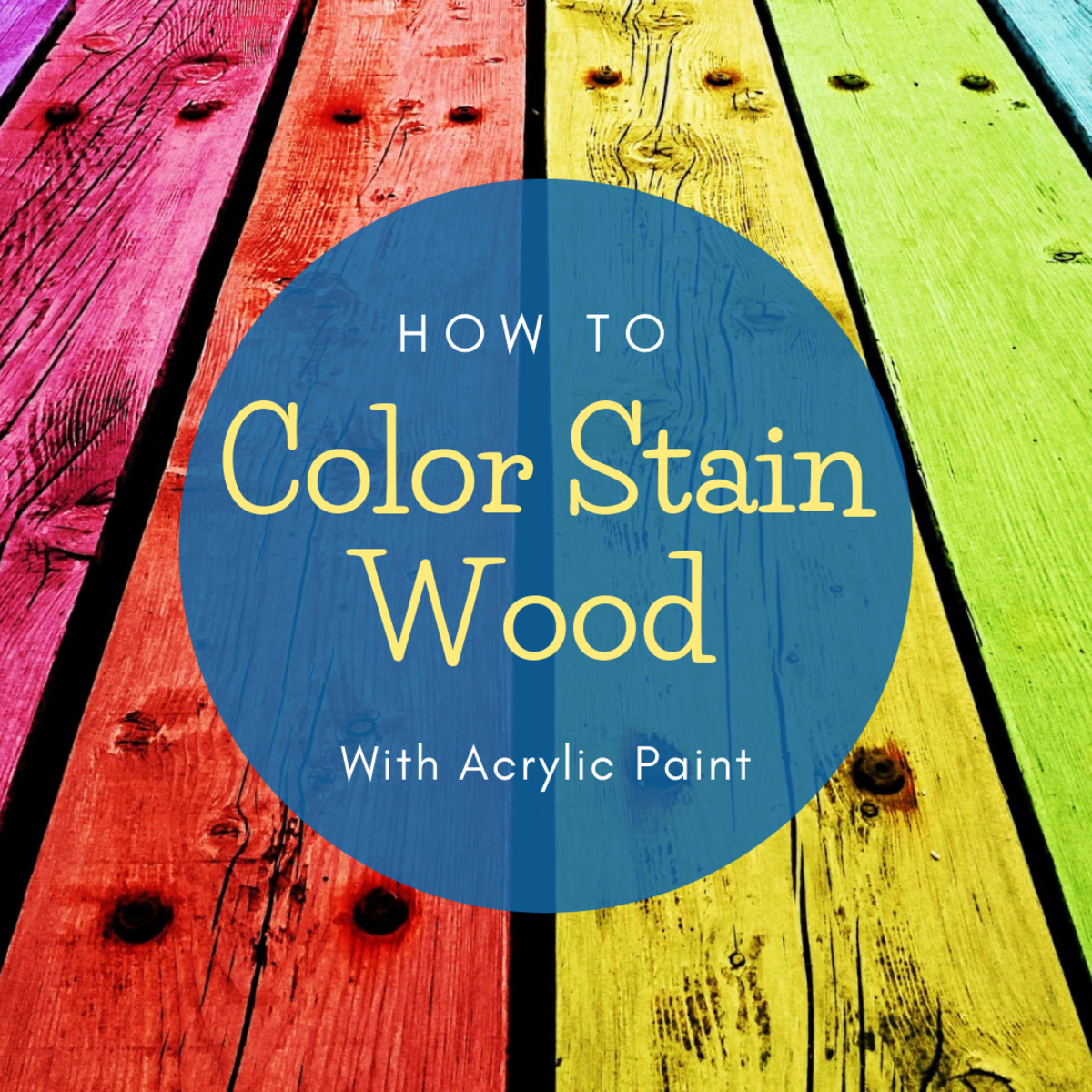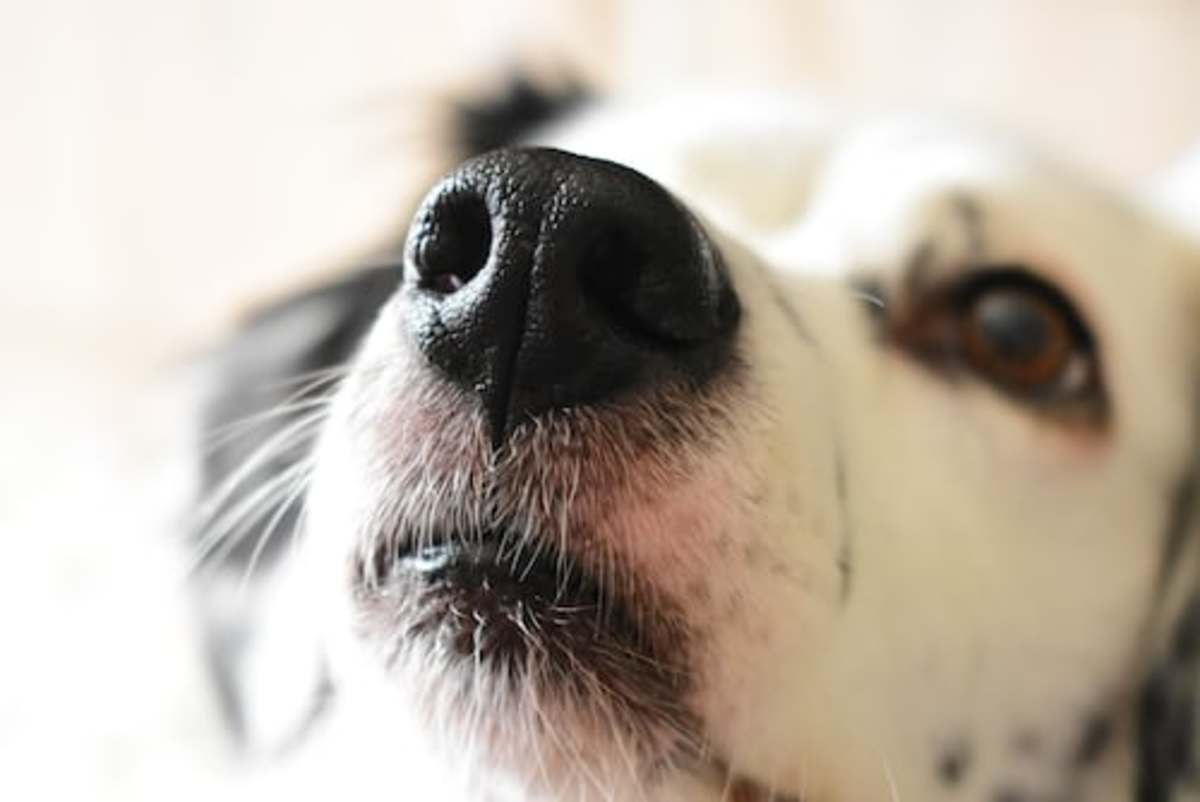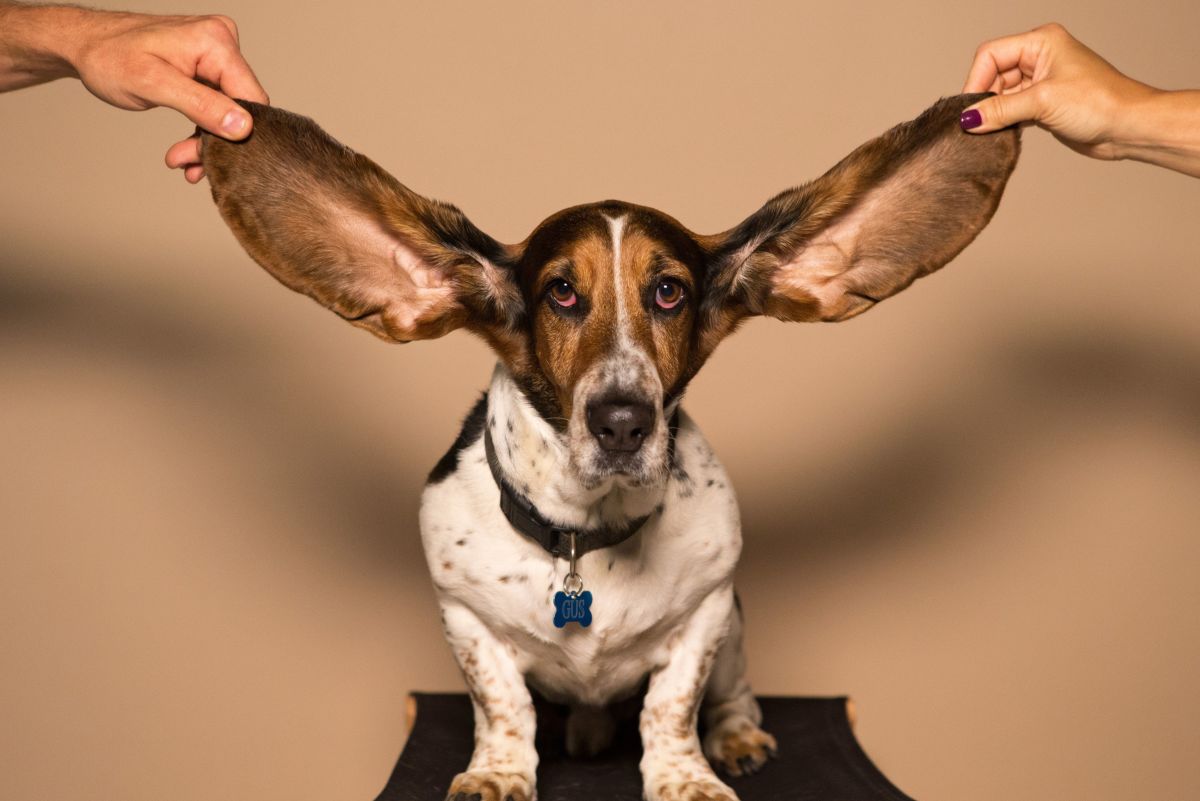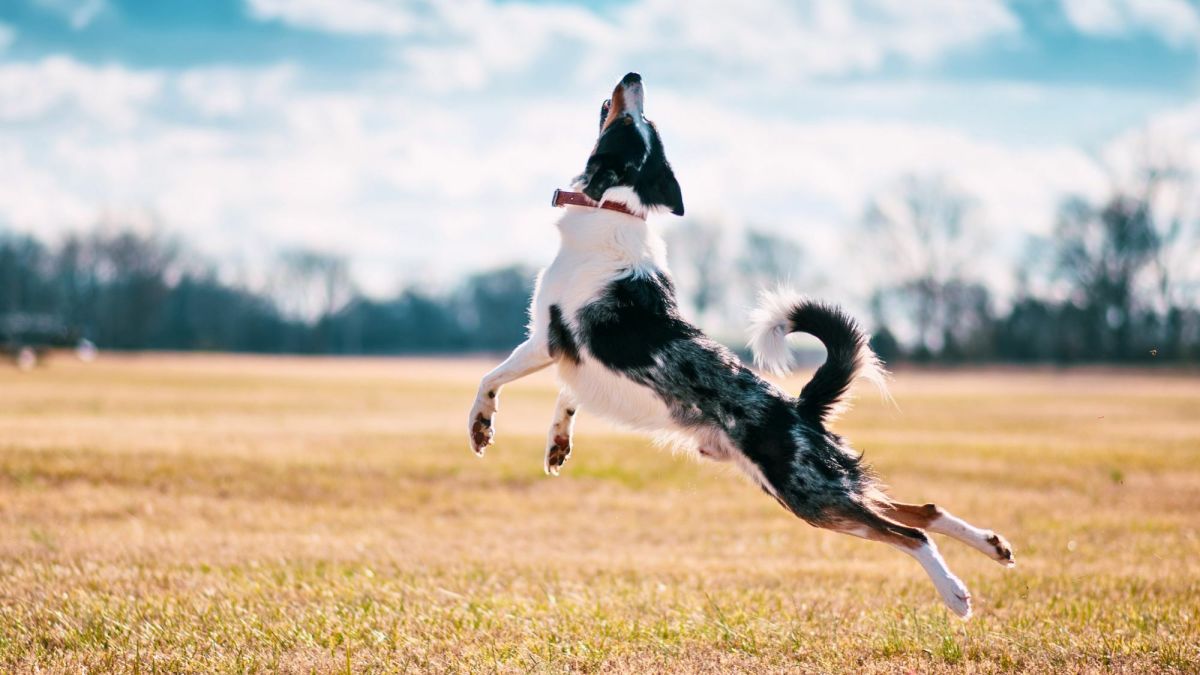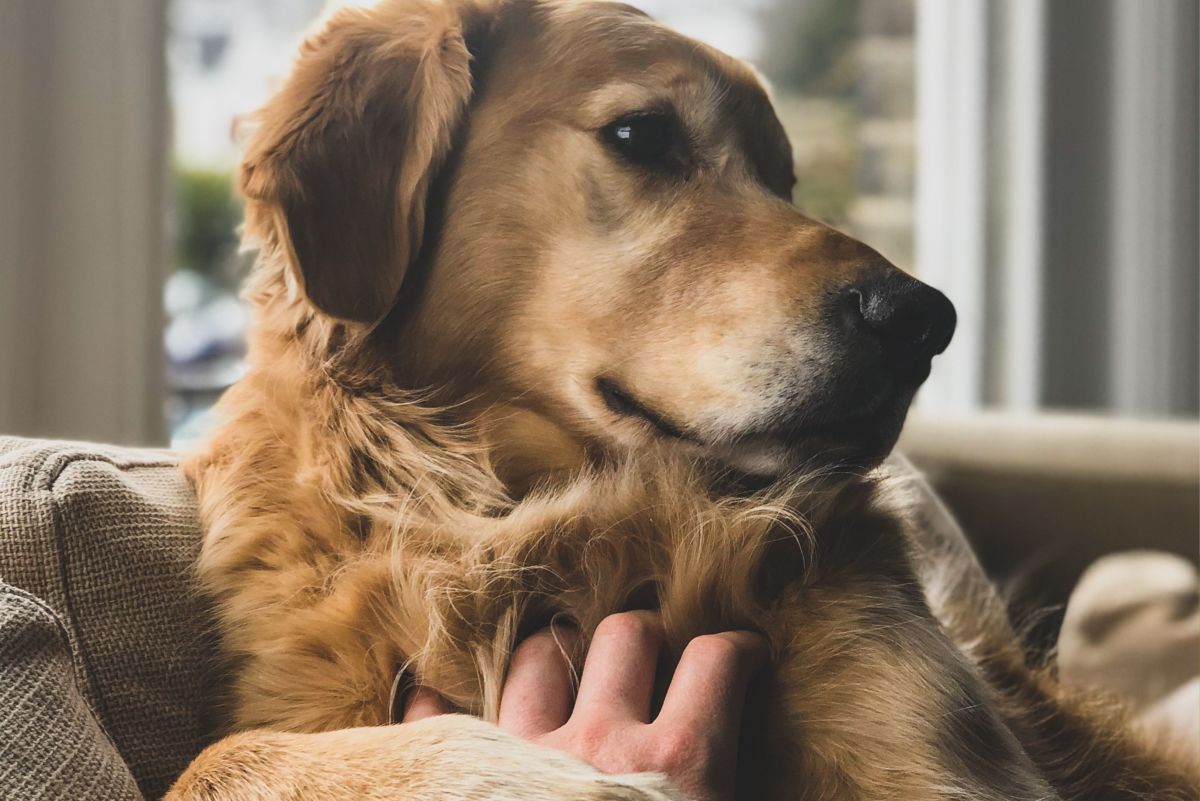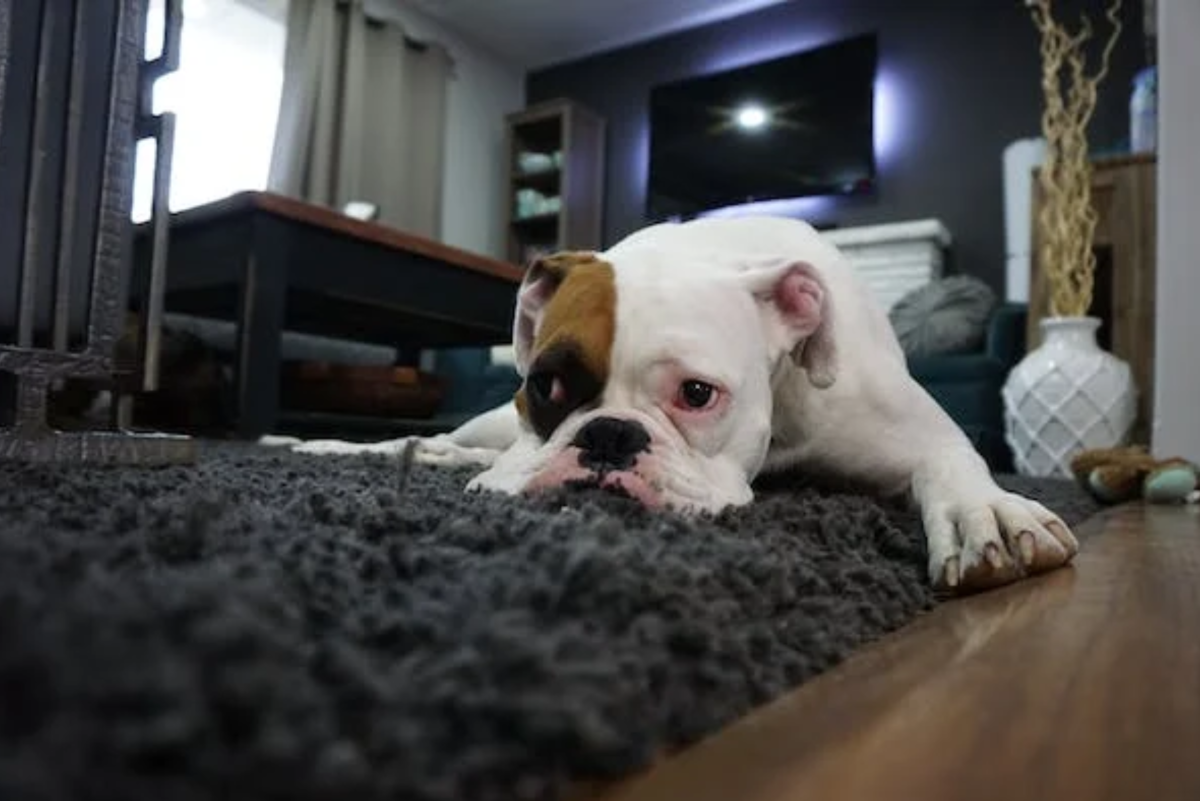Fix your dog's tear stains!
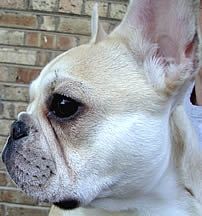
It's tough to be a blonde....
Teddy, my French Bulldog, is the first light-colored dog I've ever owned. And, for the first time ever, I've had to deal with tear stains. I know that many dark-colored dogs probably have them, but you can't see them, so they didn't matter.
The reddish-color stains are, according to All Pet Naturals "The red tear stain condition in dogs, just below the eyes is called epiphora and its caused when wet facial hair from excessive tearing gets moist and thus becomes a breeding ground for a reddish type yeast bacteria. Not only is it unsightly but may be very irritating to your pet. The staining may also emit a moderate to noticeably strong odor."
Tear stains aren't a huge health problem, but they are unsightly and can cause some odor.
Also - I hate the way tear stains look. It's one of my "pet peeves" - and probably one of the reasons I never had white or light-colored dogs before Teddy.
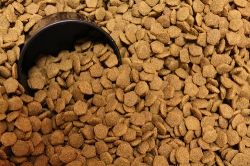
Some options are better than others
I started doing some research on products to remove tear stains.
The most well-known product is easy to use - it comes in several flavors and you sprinkle it on the dog's food every day and it does work.
It's also an antibiotic called "Tylosin," which, according to Wikipedia, "Tylosin is a coccidiostat food additive used in veterinary medicine. It has a broad spectrum of activity against gram positive organisms and a limited range of gram negative organisms. It is found naturally as a fermentation product of Streptomyces fradiae. Tylosin is used in veterinary medicine to treat bacterial infections in a wide range of species."
In August, 2014, the U.S. Food and Drug Administration issued a warning to the companies marketing products with tylosin as treatments for tear stains, saying "these tear stain remover products that contain tylosin tartrate are new animal drugs, as defined by section 201(v) of the FD&C Act, [21 U.S.C. § 321(v)], because they are not generally recognized among experts qualified by scientific training and experience to evaluate the safety and effectiveness of animal drugs, as safe and effective for use under the conditions prescribed, recommended, or suggested in the labeling."
I decided I didn't really want to give my dog an antibiotic every day for purely cosmetic reasons. What would happen if/when he truly needed an antibiotic to work on a real fungal or bacterial infection? Would we have to use a high-powered, more dangerous drug because his system was accustomed to a low-level of antibiotics?
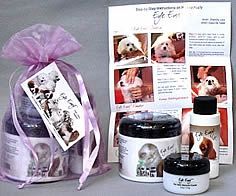
We found a tear-stain remover that works for us
I found Eye Envy at a pet supplies trade show.
It contains no antibiotics and is applied externally - the solution is wiped on with a cleaning pad and then powder is applied with a finger.
It's safe - Eye Envy contains a cleanser, an astringent (to dry the area) and herbal flower extract (acts as a natural antibiotic) and an antibacterial. It's okay if some accidentally get in the dog's eye - it's safe.
I'm so impressed with Eye Envy that I insisted we carry it in our shop - Golly Gear. We have an agreement with our customers - every product we sell we have personally tried and can wholeheartedly recommend.
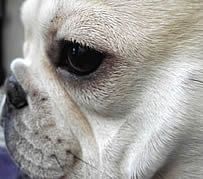
The "after" picture
Teddy's tear stains are gone!
I started using Eye Envy every day on Teddy.
The tear stains took about three weeks to disappear entirely. When I noticed the stains disappearing, I used Eye Envy every other day, then every third day.
To maintain the clean look I love, I still use Eye Envy on Teddy about once or twice a week. I have noticed that in the Spring and Fall, when he tends to have some allergies, I need to use it a bit more often.
We've been using Eye Envy for about two years now and Teddy is still stain-free!
Using Eye Envy
After watching this video, it appears that Eye Envy didn't work to remove this dog's tear stains, but it does give you a good look at how it's done and the solution and powder.
Like anything else - it works for some people and not for others. It has worked for my dog - who remains tear-stain free.



